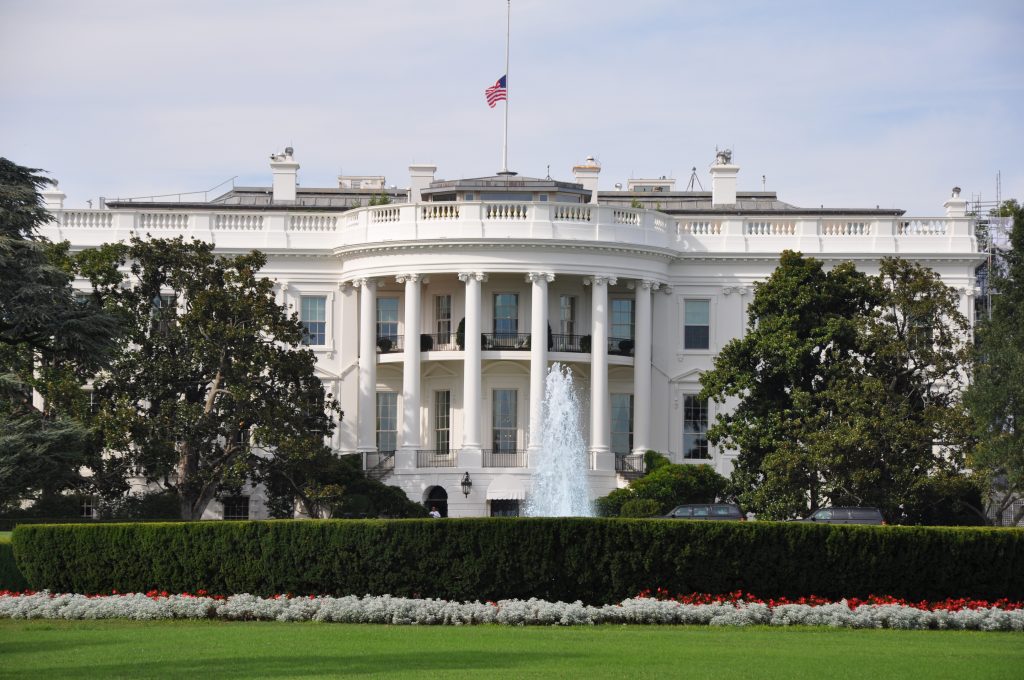Earlier this year, President Obama signed the Trade Facilitation and Trade Enforcement Act of 2015 (“Trade Facilitation Act”), effectively eliminating a longstanding loophole in the United States’ general prohibition against the importation of goods made with forced labor. As a result, U.S. companies have witnessed a resurgence of U.S. Customs and Border Protection (“CBP”) detentions/seizures under the forced labor prohibition contained in Section 307 of the Tariff Act of 1930, as amended (19 U.S.C. §1307) (“the Section 307 Prohibition”).
Prior to the signing of the Trade Facilitation Act, the importation of goods made by forced labor was permitted by the Section 307 Prohibition so long as there was a demand for those products in the United States that could not be met through domestic sourcing (i.e., the consumptive demand exception).
While much remains to be seen in how the Section 307 Prohibition (and CBP’s corresponding investigations of forced labor allegations) will evolve after the elimination of the consumptive demand exception, one thing that is clear is that CBP enforcement of the Section 307 Prohibition will continue to rise.
The Section 307 Prohibition
The Section 307 Prohibition prohibits the importation of merchandise that has been mined, produced, or manufactured, wholly or in part, in any foreign country by forced labor – including prison labor and forced child labor.1
CBP regulations state that any person who has reason to believe that merchandise produced by forced labor is being, or is likely to be, imported into the United States may communicate this belief to CBP (i.e., the filing of a petition with CBP).2
Upon receiving such communicated beliefs (i.e., upon receiving a petition that allege manufacture by forced labor, CBP initiates an investigation to determine the credibility of the allegations. When CBP determines that the allegations “reasonably but not conclusively” indicate that the merchandise was manufactured by forced labor, CBP issues a withhold release order, detaining the merchandise (both current and future shipments) and denying it entry into the United States.3
After CBP issues a withhold release order, importers of such detained merchandise have an opportunity to petition CBP for release (i.e., prove the merchandise was not manufactured by forced labor and is admissible for entry).4 When CBP determines, based on an importer’s petition, that the merchandise was not in fact manufactured by forced labor, the merchandise is released. When an importer’s petition is not successful in proving the merchandise is admissible (or where no petitions are filed), however, the merchandise will be excluded from entry. After the merchandise is excluded from entry, the importer may choose to have it exported, or where it is not exported, the merchandise will be deemed abandoned.5
While the CBP regulations establish a general framework of the Section 307 Prohibition, CBP has yet to address several key aspects of the actual Section 307 Prohibition process. For example, CBP has not issued any guidance regarding either its procedures for investigating reported incidents of forced labor or what satisfies the “reasonably but not conclusively” standard required for the issuance of a withhold release order. In addition, CBP has neither clarified the level of rebuttal evidence needed for an importer to successfully petition the release of detained merchandise nor stated how long petition reviews could take. To put this latter uncertainty in context, it can take CBP Headquarters years to issue certain rulings (e.g., CBP valuation rulings).
Moreover, CBP has not addressed the extent of a company’s supply chain that is covered by Section 307 Prohibition enforcement. Said another way, it is unknown whether the Section 307 Prohibition applies only to direct suppliers or whether it applies to all supply chain links, no matter how attenuated (or nonexistent) the relationship with the actual importer may be.
Rise in CBP Enforcement of the Section 307 Prohibition
U.S. companies can expect continued scrutiny of their international supply chains and increased CBP enforcement under the Section 307 Prohibition, for the following reasons:
- Legislative pressure to eliminate merchandise fouled by forced labor from international supply chains has not been higher. In January 2015, for example, the U.S. Federal Acquisition Regulatory (“FAR”) Council published rules requiring contractors and subcontractors to take affirmative action in combatting human trafficking and slavery in their corresponding supply chains.6
- Q1 and Q2 of 2016 witnessed a resurgence of Section 307 enforcement actions. In the first 85 years of the Section 307 Prohibition, CBP issued only 39 withhold release orders, and only 1 such order since 2000. In the four months since the elimination of the consumption demand, in contrast, CBP has already issued 3 withhold release orders.7
- Any person is permitted to file a petition with CBP alleging forced labor. The CBP regulations effectively permit a large category of third-parties (e.g., competitors, current and ex- employees, trade associations, etc.), regardless of standing or relationship to the allegations, to report alleged forced labor to CBP. Such third-parties need only a “reason to believe” that such merchandise is being produced with such forced labor in order to file.
- CBP is required to submit forced labor reports for review by U.S. Congress. These reports must be submitted yearly and must include the number of instances in which merchandise was denied entry due to forced labor. This requirement will undoubtedly place additional pressure on CBP to display active trade enforcement in the forced labor arena.
- Interagency cooperation and resource sharing has increased. With the signing of the Trade Enforcement Act, CBP created the Trade Enforcement Task Force (“the Task Force”).8 Among other things, the Task Force focuses on the “interdiction of products manufactured using forced labor”. The Task Force coordinates efforts with the Department of Commerce, U.S. Immigration and Customs Enforcement’s Homeland Security Investigations, and the Department of Labor.
Should You Be Concerned?
To put it very simply, yes, you should.
CBP has historically cast a wide net when issuing withhold orders, effecting a variety of merchandise from manufacturing countries that are highly-utilized by U.S. companies (e.g., China, India, Japan, Mexico, etc.). Specifically, of the 42 orders issued by CBP under the Section 307 Prohibition, subject merchandise includes (among other things) certain hand tools, steel and galvanized pipe, auto parts and auto machinery, textiles and textile machinery, men’s and women’s apparel, footwear, furniture, carpet and wool, soda ash, stevia, potassium, potassium hydroxide and potassium nitrate, asbestos, teas and grapes.9 Thus, companies in all industries, sourcing from all international supply chains are susceptible to Section 307 Prohibition attention.
To that end, companies that find themselves ensnared in Section 307 Prohibition enforcement actions can incur substantial monetary and reputational losses.
Ensnared companies will absorb losses associated with the detention/seizure/forfeiture of imported merchandise, face immediate (and potentially permanent) supply chain disruption (i.e., the inability to continue purchasing from certain suppliers or through certain supply chain links), and risk being the beneficiary of additional penalties levied by CBP. In addition, U.S. companies can accrue significant legal fees combatting such enforcement actions.
That being said, the biggest impact a Section 307 Prohibition enforcement action can have on an ensnared company, however, is reputational damage. In the four months since the signing of the Trade Facilitation Act (i.e., since the resurgence of the Section 307 Prohibition), the issue of forced labor in U.S. companies’ supply chains has been publicized by major media sources (e.g., the Wall Street Journal, the New York Times, the Financial Times, Bloomberg, etc.) and has entangled several large multinational companies.
Finally, while it appears relatively easy for CBP to issue a withhold order (since the resurgence of the Section 307 Prohibition), successfully petitioning for the release of such merchandise and/or the lifting of a corresponding withhold order may prove to be a very onerous task for importers. Thus once merchandise is in the Section 307 Prohibition crosshairs, importers could find it effectively tainted for a very long time.
Taking today’s business climate and objective moral compass into account, being associated with forced labor can ruin a brand and have a lasting effect on a company’s overall image.
What Should be Done to Limit Enforcement Exposure
Given the economic and reputational risks at stake, all companies should periodically review their international supply chains and assess the potential forced labors risks with regards to merchandise/components that are imported and certain suppliers/countries from which merchandise/components are sourced. In addition, since the bar for filing Section 307 Prohibition complaints is low (i.e., anyone can file), all companies should make sure they have (i) a process for employees to raise potential issues to management and (ii) a process for management to investigate and address credible issues.
Although much is still left to be seen regarding the resurgence of the Section 307 Prohibition, with good internal controls and a proactive approach to supply chain management, most companies can limit exposure to these sorts of enforcement actions.
1 19 U.S.C. § 1307
2 19 C.F.R. § 12.42(b)
3 19 C.F.R. § 12.42(e)
4 19 C.F.R. § 12.43(b)
5 Id.
6 80 Fed. Reg. 4967 (January 29, 2015)
7 See https://www.cbp.gov/newsroom/national-media-release/2016-03-29-000000/cbp-commissioner-issues-detention-order-chemical (March 29, 2016); https://www.cbp.gov/newsroom/national-media-release/2016-04-13-000000/cbp-commissioner-issues-detention-order-potassium (April 13, 2016); https://www.cbp.gov/newsroom/national-media-release/2016-06-01-000000/cbp-commissioner-issues-detention-order-stevia (June 1, 2016)
8 See https://www.cbp.gov/newsroom/national-media-release/2016-05-02-000000/cbp-creates-trade-enforcement-task-force (May 2, 2016)
9 See https://www.cbp.gov/trade/trade-community/programs-outreach/convict-importations



